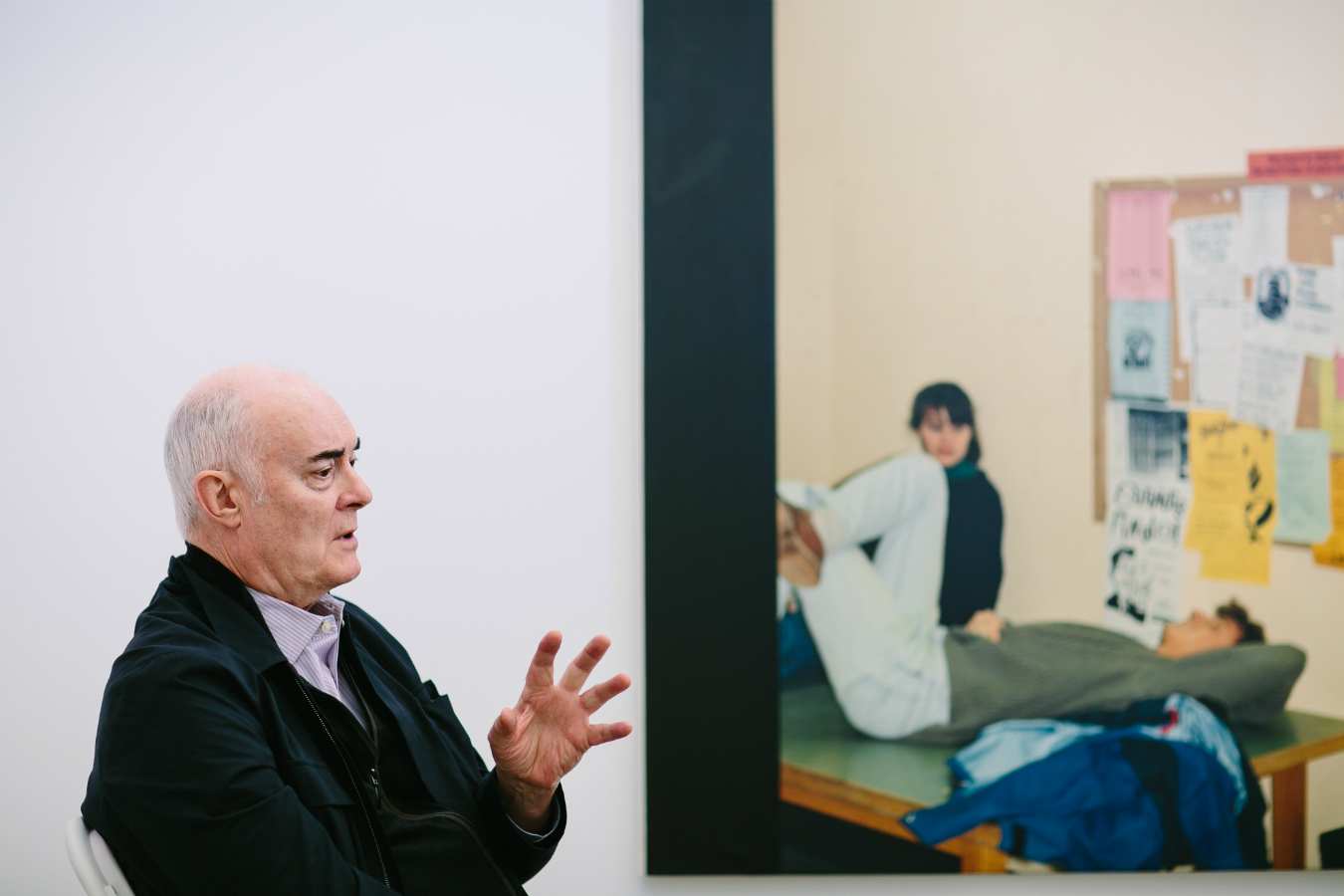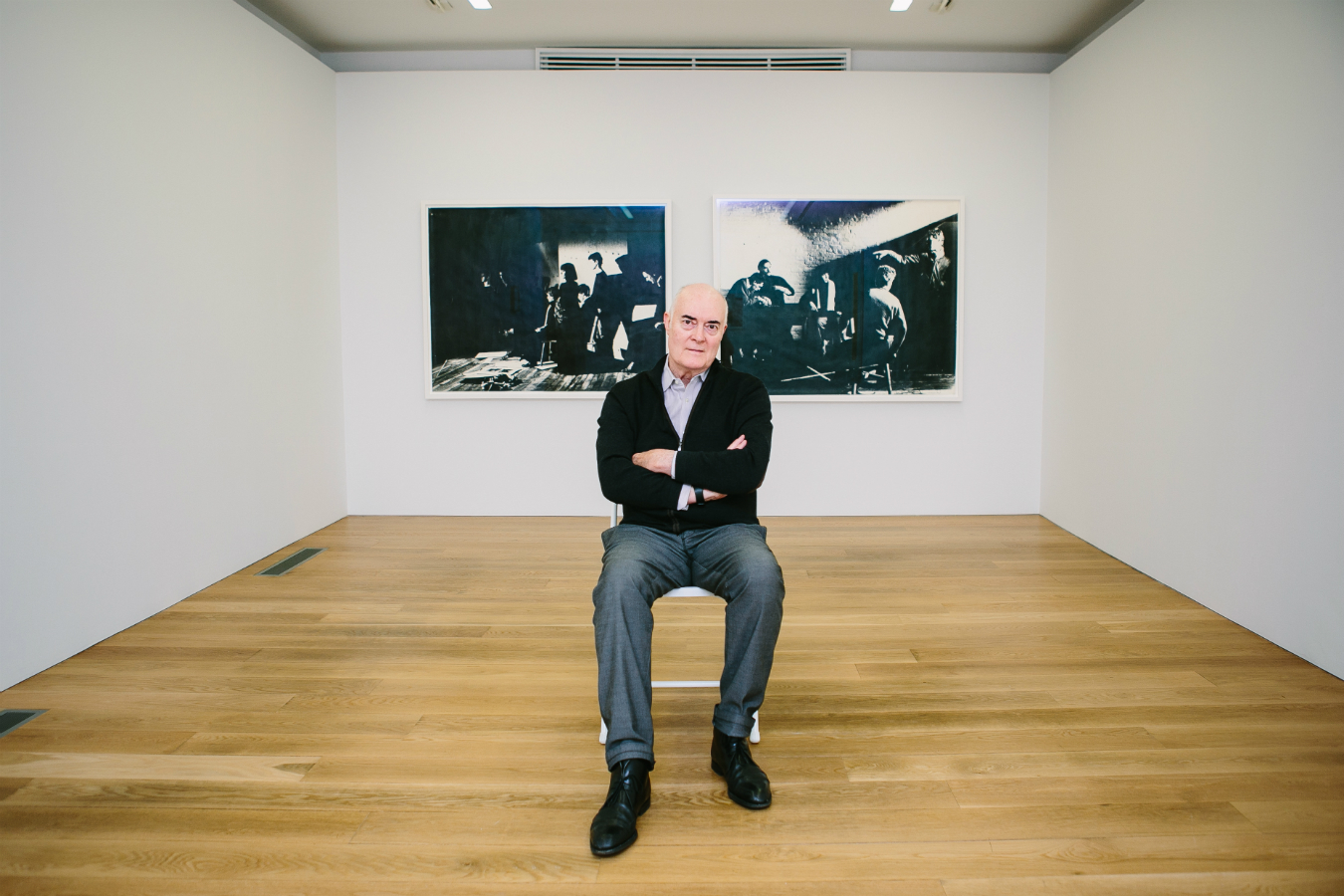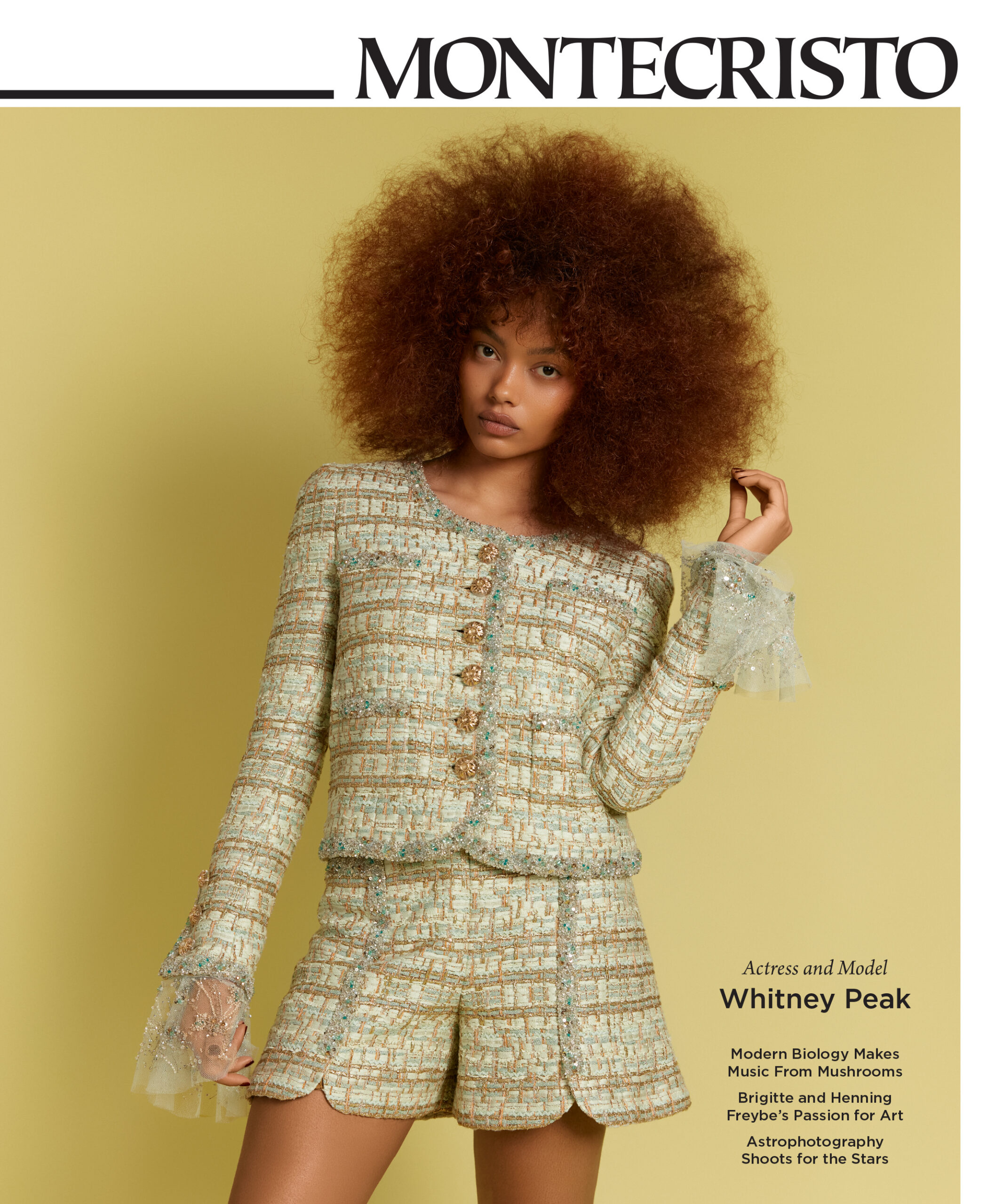Ian Wallace is, first and foremost, a teacher. Evidence of such is clear in Idea of the University (1990), presented at the Rennie Museum exhibition “Ian Wallace: Collected Works,” marking the piece’s first Vancouver showing since its debut. It consists of 16 panels featuring monochrome swaths, breaking up photographs taken at the University of British Columbia (UBC), where Wallace studied and taught. The images are each unhistorical in their mundanity. However, meaning in Wallace’s work is often found beyond the picture plane.
“It was the fall of 1989 and the Montreal Massacre had just happened,” Wallace says, pointing towards a panel, which features UBC professors Serge Guilbaut and William Wood talking at Main Mall on campus, at the back wall of the Rennie gallery. The École Polytechnique massacre took place on December 9, 1989; 14 women were killed in a classroom by a gunman who declared his hate crime was driven by anti-feminism theory. “Someone from Montreal sent a fax to the university’s fine arts department, and these guys are just discussing it,” Wallace says of the image. “It is a very tragic and important event going on here, but you don’t necessarily know that. I’m interested in this idea of meaning in everyday life—we see the surface, we don’t know what goes on underneath the surface, but there’s important subject matter that goes on.” A seemingly everyday collegiate scene is suddenly transformed into a documentation of real-life horror.
Regarded as a founder of photo-conceptualism (what is now referred to as the Vancouver School, made up of peers Jeff Wall, Ken Lum, Vikky Alexander, and Stan Douglas, among others), Wallace is internationally recognized as one of Vancouver’s most prominent and important artists. His work frequently blends photography and painting, deconstructing their material associations and creating intersections of not just the two mediums, but also of narratives personal and public. The works presented at the Rennie show, on view through September 30, 2017, are not just monumental in their place within art history, but also are all part of a donation by Bob Rennie to Ottawa’s National Gallery of Canada worth $12 million. It is one of the largest gifts ever received by the National Gallery.
“Art has that way of, in unexpected ways, communicating with people.”
In the 1960s, Wallace’s work was occupied with the exploration of single-colour fields. His last monochrome piece, Untitled (White Monochrome with Orange Rectangle), from 1968, is presented at the Rennie exhibition. “I had just really come to the end of it, and I began switching to other ideas of what a painting could be, what a picture could be,” he says. “It was very difficult to use painting to reflect on the world, so photography felt like a way to comment on the world in a more political way. Not directly—it was very indirect.”
Inspired by the photographic work of essential Vancouver artists such as N.E. Thing Co.’s Ingrid and Iain Baxter, who used photography in more transgressive ways, Wallace began working with the image as a piece of conceptual art, using photography to document social context. A seminal project by Wallace and presented in the show is Poverty. Done from 1980 to 1984, the work brings together both Wallace’s study of monochrome as well as cinematic narratives in film, constructing both a projected fantasy and social reality. “In the late ’70s early ’80s, there was a big return to expressionist painting, and I was quite aware of that, but I was trying to see how I could map a photographic image onto a field,” Wallace explains. “And in the early ‘80s, really beginning with the Poverty piece, I began using painting as field or a background for my photographic interests—in this case, it’s on a social theme.” Wallace used friends to act out scenes of homelessness, creating a cinematic narrative. The images are repeated and abstracted using oil silkscreen (a technique borrowed slightly from Andy Warhol) and put on acrylic-painted canvas, teasing out further complications and intersections between the real and the imagined.
Theoretically and conceptually, Wallace is scrupulous. In the 1980s, he established that there were three photographic themes that emerged in his work: “One was the studio, in other words the process of making the work of art, which is sort of one’s private space,” he explains. “Then there’s the museum, where you look at works of art—the public space where the work is presented publicly. And then the street, which is the social space that has large-scale architecture, citizens of the city, individuals.” These themes are consistently (though not exclusively) studied in his catalogue, and create a link not just between decades, but individual pieces as well.
Wallace often returns back to basics, re-visiting some of the fundamental issues present in modernism. His recent 2017 show at Catriona Jeffries in Vancouver presented pieces of his that are concerned with mise en abyme, or a picture within a picture and how a frame or canvas procures and limits the meaning of a creation. Those issues of transgression are fundamental in his projects throughout the years—they are seen the bands of colour, their hues chosen “really spontaneously and arbitrarily,” in pieces such as La Piscina, Valencia that releases the picture from its photographic duties, but also tethers it to a history of painting, and vice versa.
The themes addressed in Wallace’s work are big, and his approach to them is rigorous and studied. But his admiration for art—for the people who make it, and for its promise of transformative qualities—keeps the work genuine. There’s an optimism and sincerity in Wallace’s vast output, a belief in poetry. “In the ‘60s we used to have these utopian, romantic ideas that art will change the world, and I think it does—in an indirect way, in a way that cannot be reduced to rational argument,” Wallace says. “Art has that way of, in unexpected ways, communicating with people.”
More from our Arts section.









